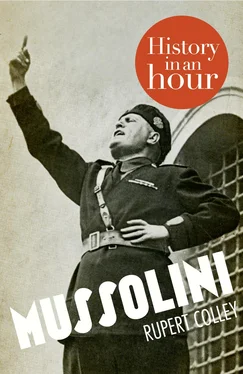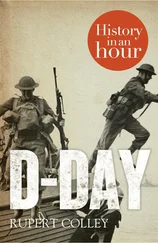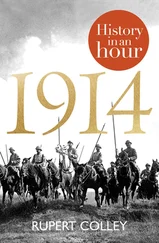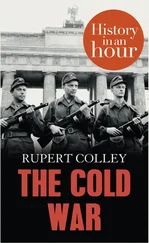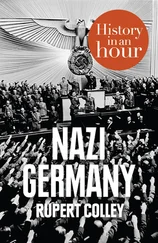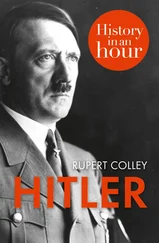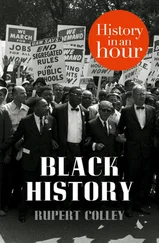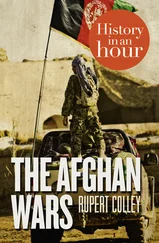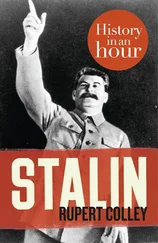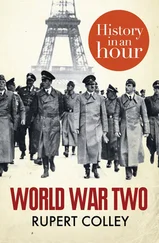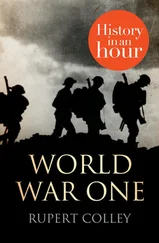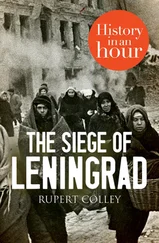Never to suffer a setback lying down, Mussolini responded by establishing his own newspaper, Il Popolo d’Italia , ‘The People of Italy’, which ran from November 1914 until the day Mussolini was removed from power in July 1943. One of his first editorials included his battle cry: ‘Blood alone moves the wheels of history’.
Mussolini founded his first political party, the Autonomous Fasci of Revolutionary Action, which, on 11 December, became the Fasci of Revolutionary Action, soon abbreviated to Fascists. He used, as the party symbol, later incorporated into the fascist flag, the fascio littorio , a bundle of sticks, bound together, with an axe protruding; a nod to the glory days of the ancient Roman Empire. (The word fascis is Latin for bundle.)
Britain and France, keen to encourage Mussolini in his support of the war, donated generous funds to the fledgling party, and Britain’s secret services even put Mussolini on its pay roll, paying him a wage of £100 per week.
Finally, on 26 April 1915, Italy, seduced by the Allies’ offer of various territories, including the Adriatic port of Fiume, signed in secret the Treaty of London in which Italy aligned itself to the Triple Entente. A month later, on 23 May, Italy duly declared war on Austria-Hungary and on Germany in August 1916.
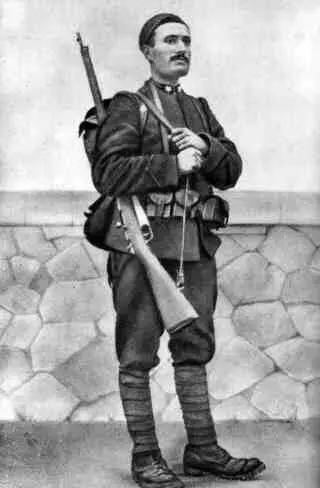
Drawing of Mussolini as a soldier, 1917.
Italy’s war was not the glorious affair its government had hoped for. Instead, hampered by poorly trained and generally unwilling conscripts led by inept and inexperienced officers, its armies became embroiled in a slogging match against the Austrians, most infamously during the course of twelve inconclusive battles along the River Isonzo. The war cost Italy over 650,000 dead, half a million missing and almost a million wounded. But the Italians finished the war with a Pyrrhic victory against the Austrians, albeit with much assistance from its allies, at the Battle of Vittorio Veneto, October–November 1918.
In September 1915, Mussolini had rejoined the Italian army where he was praised for his bravery and devotion, and reached the rank of corporal. On 22 February 1917, Mussolini was in a trench with colleagues when one of their grenades went off. ‘Flesh was torn; bones broken.’ According to his autobiography, he needed twenty-seven operations within the month. He returned home to recuperate and edit his Il Popolo d’Italia , and strengthen his political party, the Fascists. He still called for revolution and still spoke out against democracy but now his rhetoric was fuelled by patriotism and ultra nationalism rather than socialism and the cause of the working classes.
Mutilated Victory CONTENTS Cover Title Page Mussolini History in an Hour Rupert Colley Introduction Risorgimento Early Years First World War Mutilated Victory The March on Rome The Matteotti Crisis Totalitarianism Mussolini and the Pope The Duce’s Cult of Personality Mussolini’s Women Anti-Semitism Mussolini’s Foreign Adventures Mussolini’s Wars Austria, Czechoslovakia and Albania War Mussolini’s Downfall The Rescue of Mussolini The Italian Social Republic Execution of Mussolini The Italian Holocaust Mussolini’s Body Appendix 1: Key People Appendix 2: Timeline Copyright Got Another Hour? About the Publisher
Despite its victory at Vittorio Veneto, Italy was treated dismissively during the post-war talks at the Paris Peace Conference. The territories promised at the 1915 Treaty of London were not forthcoming, nor was Italy able to claim any of Germany’s former colonies. Italy’s prime minister, Vittorio Orlando, walked out of the talks, leaving Italy disappointed by its spoils of war. Heavily criticized by all sides of the political spectrum, Orlando was soon ousted from office. Italy, Italians felt, had been betrayed. It was, in the words of poet Gabriele D’Annunzio, a ‘mutilated victory’. (D’Annunzio, a fellow revolutionary, initiated several rituals that Mussolini later copied – the fascist, or Roman, salute, the black shirts, and the rousing speeches delivered from high balconies.)
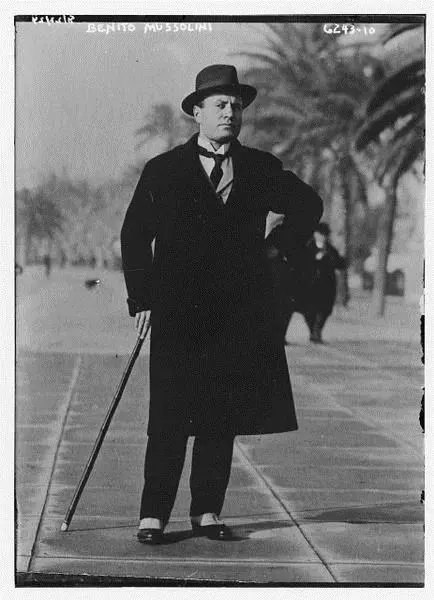
Benito Mussolini, 1920s.
On 23 March 1919, Mussolini, based in Milan, renamed his party the Italian Fasci of Combat. In his opening address, Mussolini claimed to be ‘opposed to all forms of dictatorship’. His views at this stage were firmly anti-socialist, anti-monarchy and anti-Church, and supportive of those who seethed at Italy’s mutilated victory. But while he may have had his loyal supporters, it was still an insignificant force nationally. In the elections of November 1919, his party failed to win a single seat. His opponents lampooned him by staging a mock funeral. With the socialists winning a third of seats in the Italian parliament, the Chamber of Deputies, Italy entered a period remembered as the ‘Two Red Years’.
From November 1919 until October 1922, Italy had a succession of four prime ministers and coalition governments each as powerless as the others to deal with the near-anarchy engulfing the country. As elsewhere in Europe, Italy suffered the post-war hangover as legions of demobilized soldiers returned home to a bleak and uncertain future. Crippling poverty, inflation, unemployment, national debt and disillusionment paralysed the nation as Italy descended into a period of chaos and political violence. Socialists, communists and fascists fought each other on the streets and in the villages. People were killed and communities terrorized as riots, strikes and disorder, both in the towns and the country, undermined the government. Groups of black-shirted fascists, squadrismo , paramilitary squads, intimidated and beat opponents, ransacked the offices of their rivals, including, in April 1919, that of Avanti! , and were soon resorting to arson and murder. It was, for Mussolini, the ‘iron necessity of violence’. Police, often sympathetic towards the fascists, stood by. A favourite punishment meted out by fascist mobs was to force opponents to consume large amounts of castor oil or swallow live frogs, tricks Mussolini had learnt from D’Annunzio.
In the national elections of 15 May 1921, Mussolini’s quest for power took a major step forward, or at least a ‘foot in the door’. His party, the Italian Fasci of Combat, joined a coalition of right-wing parties, the National Bloc, and managed to gain 35 seats of the total 535. In itself, this 6 per cent representation was insignificant. Of far greater import was that Mussolini had gained a seat in the Chamber of Deputies and was now a legitimate part of Italy’s political landscape. Needing to broaden his appeal, Mussolini, for whom principles always played second fiddle to expediency, now became pro-monarchy and pro-Church. The only constant was his hatred of socialism.
On 7 November 1921, Mussolini again renamed his party, now calling it the Partito Nazionale Fascista , PNF, the National Fascist Party. Word about Mussolini began to spread. Here was a man who promised to govern with a firm hand, to bring back order. At a time of near anarchy and when the threat of Bolshevism loomed large, Mussolini’s nationalistic message and authoritarian leadership found much support. Public opinion was beginning to turn.
The March on Rome CONTENTS Cover Title Page Mussolini History in an Hour Rupert Colley Introduction Risorgimento Early Years First World War Mutilated Victory The March on Rome The Matteotti Crisis Totalitarianism Mussolini and the Pope The Duce’s Cult of Personality Mussolini’s Women Anti-Semitism Mussolini’s Foreign Adventures Mussolini’s Wars Austria, Czechoslovakia and Albania War Mussolini’s Downfall The Rescue of Mussolini The Italian Social Republic Execution of Mussolini The Italian Holocaust Mussolini’s Body Appendix 1: Key People Appendix 2: Timeline Copyright Got Another Hour? About the Publisher
Читать дальше
